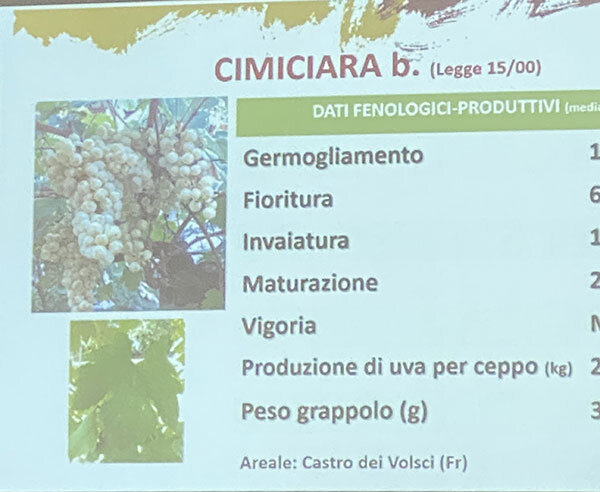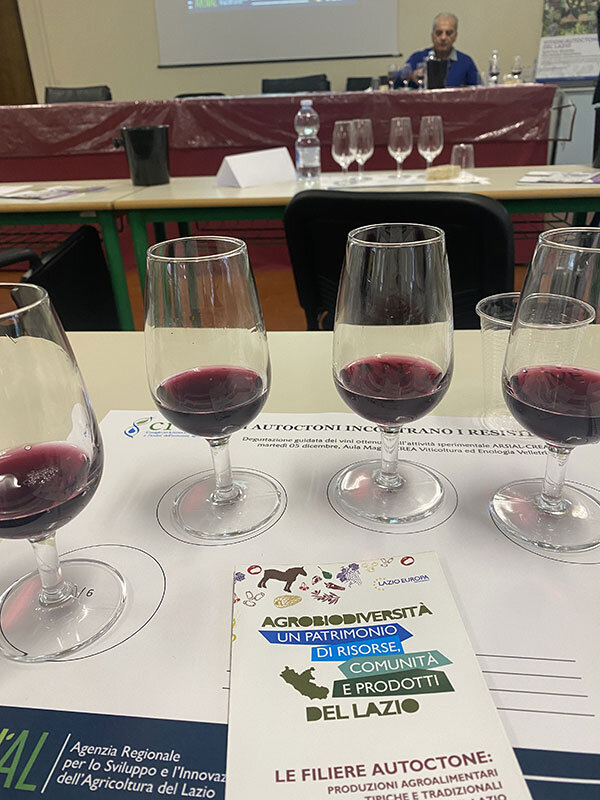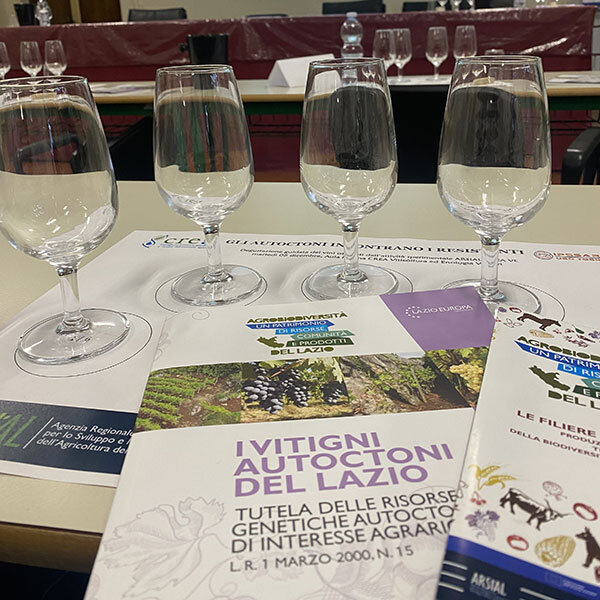Those familiar with the Lazio area can name native grapes such as Malvasia and Cesanese. But have you heard of the varieties Cimiciara or CesEnse? Reale Bianca or Calamaro?
In two explorative and technical masterclasses titled “Biodiversity meets resistant vines”, held at the Cantina Sperimentale in Velletri, we took a deep dive into exploring Lazio’s lesser known native grapes produced as single varietal wines, and also blended with resistant vines.


With unique characteristics, these native vines represent a budding identity for the region and an added value for the local economy. Together with resistant vines, which were selected to resist grapevine diseases such as downy mildew, or to adapt to climate change, they can open new frontiers to quality viticulture.
Grape producers in the Lazio region had a rough 2023 harvest; spring rains brought peronospora (downy mildew) that reduced or completely wiped out production, the latter being our personal case at our farm. Other regions may not be that familiar with Peronspora, but in Lazio, a region known for its potentially humid and wet spring periods, producers have historically tangled with it. It’s heartening these sessions address the problems Lazio has to face.


Peronospora (Downy mildew) can cause serious damange to viticulture. In the photo , its effects on bunches of wine grapes.
Crea/Ve and Arsial, two entities that understand the challenges to Lazio viticulture, led the masterclass. They presented alternative solutions while creating new wines with strong ties to the territory.
The wines were produced by Crea/Ve from grapes grown in Arsial’s"Biodiversity Vineyard" in Velletri. They were all aged in steel in small quantities, due to the experimental nature.
During the first session, 12 wines from biodiverse white grape varieties from Lazio were tasted: Maturano Bianco, Reale Bianca, Cimiciara, Petroveccia, Tostella and Capolongo b. , first as single varietal wines and then blended with 15% of the resistant Soreli vine.



The one I found most interesting was Cimiciara, with its freshness and minerality. When the varieties were blended with the Soreli vine, the nose intensified in almost all the wines, adding aromas similar to a Sauvignon, such as citrus, tomato and honey.



Fourteen wines from Lazio red grape varieties were tasted in the second session: Maiolica (Nostrano), Calamaro, Cesenese n., Raspato, Corapecora, Montepulciano, and Uva Giulia, first pure and then blended with 15% of the grape variety resistant Cabernet Volos or Cabernet Eidos.



Calamaro showed the greatest potential. It has a challenging marketable name for a red grape, but with a little aging in wood, this wine could shine.
The cultivation of native and resistant vines in Lazio is important to preserve biodiversity and resist disease, but also to produce high quality, sustainable wines that further Lazio’s winemaking identity.
It was exciting to take part in these masterclasses and even more so to muse on the possibilities: Study Lazio’s lesser known native grapes, contemplate planting the vines, and eventually create a distinguished wine.

